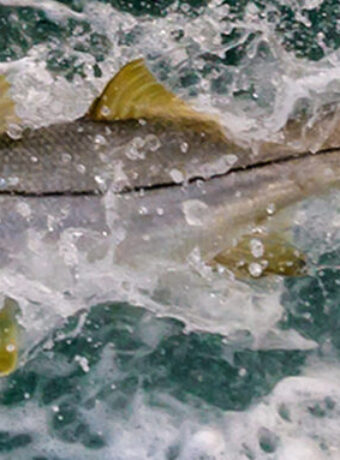Cumberland Island: History and Hiking Trails Guide
Cumberland Island National Seashore beckons with wild beauty and intriguing history. This post explores Cumberland Island’s history and hiking trails, promising an adventure. From indigenous peoples to Gilded Age mansions, the island holds stories. Let’s uncover the magic of Cumberland Island National Seashore.
We ventured up from St. Augustine to St. Mary, Georgia the evening before and camped in our van. A woke the next morning put together a quick breakfast, loaded the packs and headed to the docks. Beautiful sunny spring day perfect for the boat trip across and day hiking with some great exploring.
Table of Contents
A Journey Through Time: Cumberland Island’s History
Indigenous Peoples (4000 BCE – 1500 CE)
The Timucuan people called Cumberland Island home long before Europeans arrived. They thrived on the island’s resources, fishing, hunting, and gathering. Remnants of their lives, like pottery shards and shell middens, whisper tales of a harmonious existence.
Spanish Colonial Era (1500 – 1763)
In 1542, Spanish explorer Hernando de Soto landed on Cumberland Island. This marked the arrival of Europeans, forever changing the island. The Spanish built missions and trading posts, imposing their culture on the Timucuans.
British Colonial Era (1763 – 1783)
Cumberland Island played a role in the American Revolution. The island witnessed strategic maneuvers, shaping the nation’s future. The Cumberland Island Lighthouse, built in 1791, guided ships and symbolized American interests. Today it still stands, providing beautiful views.

Sea Turtle Graphic Hoodie Hiking Apparel
On a hike, backpack or just beach combing, sun protective performance is a must. Hiking and Beach Apparel.
Gilded Age and the Carnegie Family (1880s – 1920s)
During the Gilded Age, Cumberland Island became a winter retreat for the wealthy, including the Carnegie family. They built mansions like Plum Orchard, leaving a lasting island legacy. on the National Park Establishment (1962 – Present)
National Park Establishment (1962 – Present)
Recognizing the island’s value, Congress established Cumberland Island National Seashore in 1962. The National Park Service preserves this national park, offering daily tours and protecting the barrier island. The park also contains various tidal creeksExploring Cumberland Island National Seashore History and Hiking Trails
With over 50 miles of trails, roads, and beaches, hikers have many options. Trails wind under live oaks with Spanish moss, through maritime forests, alongside salt marshes, and onto undeveloped beaches. The Georgia Conservancy provides helpful Cumberland Island trail maps. These were designed for easy navigating.
Day Hikes on Cumberland Island National Seashore
| Trail Name | Distance | Difficulty | Description |
|---|---|---|---|
| Southend Loop Trail | 4.3 miles | Easy | A classic loop exploring the southern tip. Perfect for families, offering scenic marsh and ocean views. This trail also features the historic district. |
| Marsh Boardwalk Trail | 0.5 miles | Easy | An elevated boardwalk over a salt marsh, accessible for most. Perfect for spotting wildlife. |
| Dungeness Trail | 3.5 miles | Moderate | Winds through a hardwood forest, offering glimpses of Dungeness ruins and overlooks. This intersects with the Nightingale Trail for a more scenic forest setting. |
| Seachange Trail | 1.5 miles | Easy | A short stroll through a maritime forest. Ends at a peaceful beach overlook. |
| Willow Pond Trail | 3.8 miles | Moderate | Explore diverse habitats, including a willow pond and maritime forest. A great option for birdwatching. |
| River Trail | 4.5 miles | Moderate | Follows the Cumberland River offering views of the water and opportunities to spot wildlife. |
| Table Point Trail | 6.5 miles | Moderate | Journey to Table Point, encountering varied terrains, and marvel at the expansive marsh vistas. This area features many maritime |
Multi-Day Backpacking Trips
For adventurous overnight journeys, Cumberland Island offers backpacking trips, some in wilderness areas. Remember to obtain the necessary permits.
-
- Parallel Trail (10.5 miles, strenuous): Spans the island’s length, showcasing its diverse ecosystems. Bring plenty of water since sources North of Sea Camp require treating.
- Wilderness Trail (12.5 miles, strenuous): Explore Cumberland’s wilderness with challenging terrain. Accessible for private boaters at the Sea Camp and Dungeness Docks on a first-come, first-served basis. A quieter way to experience the maritime forests.
Camping on Cumberland Island: A Wild and Unspoiled Experience
Cumberland Island National Park offers a unique and primitive camping experience, allowing visitors to immerse themselves in the island’s natural beauty and wildlife. With limited amenities and no cars, camping on Cumberland Island is a true wilderness adventure.
Camping Options:
- Sea Camp Campground: The most accessible campground, located near the Sea Camp Ranger Station.
- Stafford Beach Campground: A more remote campground, accessible via a 3.5-mile hike from the Sea Camp Ranger Station.
- Hickory Hill Campground: A primitive campground, accessible via a 5.5-mile hike from the Sea Camp Ranger Station.
- Backcountry Campsites: Five remote sites, accessible via hiking trails and requiring a free backcountry permit.
Camping Regulations:
- Permits: Required for all campers, obtainable at the Sea Camp Ranger Station.
- Campsite Limits: 7 nights maximum stay, with a 3-night minimum stay during peak season (March 1 – November 30).
- Group Size: Limited to 10 people per campsite.
- Fires: Allowed in designated fire rings, but only with wood purchased from the park’s concessionaire.
- Food Storage: Required to store food and trash in airtight containers to prevent wildlife interactions
Amenities:
- Restrooms: Vault toilets and potable water available at each campground.
- Showers: None, but a freshwater shower is available at the Sea Camp Ranger Station.
- Potable Water: Available at each campground, but bring a water filter or purification tablets as a precaution.
- Trash and Recycling: Dispose of trash and recyclables at the Sea Camp Ranger Station.
Wildlife and Safety:
- Alligators: Present on the island, so keep a safe distance and store food and trash properly.
- Snakes: Venomous and non-venomous species present, so be cautious when hiking and camping.
- Wild Horses: Roaming freely, but maintain a safe distance and do not feed or approach them.
- Insects: Mosquitoes, ticks, and other biting insects are prevalent, so bring insect repellent and take necessary precautions.
Planning and Preparation:
- Reservations: Recommended, especially during peak season, and can be made through recreation.gov.
- Gear: Bring all necessary camping equipment, including a tent, sleeping bag, and backpack.
- Food and Water: Pack enough non-perishable food and water for your stay, and consider bringing a water filter or purification tablets.
- First Aid: Bring a basic first aid kit, including supplies for insect bites, cuts, and scrapes.
Tips and Reminders:
- Be prepared for changing weather conditions, including heat, humidity, and rain.
- Respect the island’s natural and cultural resources, staying on designated trails and not disturbing historic sites or artifacts.
- Keep a clean campsite, and pack out all trash and recyclables.
- Enjoy the island’s unique wilderness experience, and take time to appreciate its natural beauty and wildlife.
By following these guidelines and regulations, you’ll be well-prepared for a safe and enjoyable camping experience on Cumberland Island.
Other Noteworthy Trails
- Cumberland Island Lighthouse Trail (0.5 miles, easy): A quick walk to the historic lighthouse, great for views of the St Marys river.
- Plum Orchard Trail (1.5 miles, easy): Explore the area surrounding the Plum Orchard Mansion.
- Yankee Paradise Trail (1.5 miles, easy): This easy loop goes through forest and marsh. Yankee Paradise is also known as Paradise Trail.
- Brickhill Bluff Trail (2 miles, easy): This out and back hike showcases scenic views and cultural remnants of the Brickhill community.
- Terrapin Point Trail (2.5 miles, easy): Leads you to a serene area near Terrapin Point.
- Lost Trail (4.5 miles, easy): Offers views of the maritime forests and the island interior.
- Field Trail (2.2 miles, easy): Perfect for a leisurely walk near Sea Camp, exploring fields.
- Point Trail (1.5 miles, easy): This loop explores a unique part of the island interior with pine trees.
Plan and prepare for enjoyable hikes. Consider these recommendations for the best experience.
- Bring plenty of drinking water, especially if venturing north where treatment is needed.
- Use sunscreen and insect repellent, as ticks inhabit some trails.
- Wear comfortable hiking boots and dress in layers.
- Respect wildlife (horses, alligators, snakes) and stay on designated trails. Obtain a permit from the Cumberland Island National Seashore Visitor Center for backpacking, either online or at the center 30 minutes before the ferry departs.
Guided Tours – Exploring Beyond Hiking – Explore Georgia
Guided tours, like the ranger-led Footsteps Tour at Dungeness, history-focused Lands and Legacy van tours, and Molly’s Old South Walking Tours provide context. Scheduling in advance is recommended.
The park offers accessible trails like the Marsh Boardwalk Trail. Visitors with mobility concerns should check the park website or contact the park about accommodations and amenities like beach wheelchairs. While pets and kayaks are not allowed on the passenger ferry, the NPS concessionaire might offer assistance or you can find rentals at Camden Bicycle Center.
Traveling north from Cumberland Island National Seashore is one of my favorite barrier islands. St. Simons Island is one of those places where you hate to go home. St. Simons is home to Georgia’s only sea front resort, The King and Prince. I highly recommend staying here. Its beyond words.
Jekyll Island has a diverse history and is home of the Sea Turtle Research Center in Georgia. More on that to come. Cool Place.
Golfing in Georgia is worth walk. Learn more about Georgia Golf Courses.
FAQs about Cumberland Island National Seashore History and Hiking Trails
What is the abandoned mansion on Cumberland Island?
The most famous abandoned mansion is the Dungeness Mansion, built by Thomas and Lucy Carnegie in 1884. A fire destroyed it in 1959, but the ruins remain in the Dungeness Historic District.
Why is Cumberland Island famous?
Cumberland Island is famous for its untouched beaches, wild horses, unique ecosystem, and the Carnegie family legacy at Dungeness.
How long does it take to walk around Cumberland Island?
Walking the entire island is not practical for a day trip due to trail lengths. Focus on specific areas like Dungeness and combine it with shorter hikes. Consider using island roads found on trail maps. The island includes Stafford Beach which can make day trips last longer than normal.
What is the Cumberland Gap Trail?
The Cumberland Gap Trail is different from Cumberland Island. It is in Cumberland Gap National Historical Park, where Kentucky, Virginia, and Tennessee meet. This trail was key for westward expansion and isn’t on Cumberland Islan
Conclusion of Cumberland Island National Seashore
Cumberland Island National Park history and hiking trails offer a blend of nature and history. Whether a history buff, nature lover, or hiker, Cumberland Island awaits, ready to share its wonders. Consider visiting during off-peak season or mid-week for a different pace on the island.






